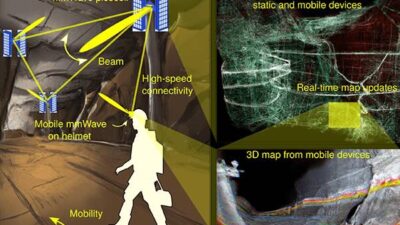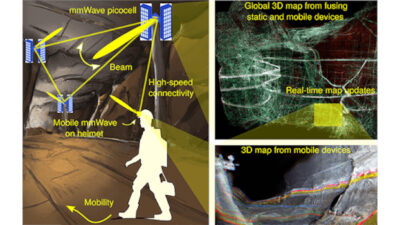Northwestern Engineering researchers have developed a chip-based terahertz frequency comb that works at room temperature and is designed for medical and biological screening.

Researchers use optical frequency combs — lasers that have a spectrum of equally spaced frequency lines — to precisely measure light, distance, and time. However, frequency combs in the terahertz range — radiation in the wavelength range of 30 to 300 microns —are more difficult to create, often involving elaborate laboratory set-ups that use cryogenic cooling. Such combs could be useful in detecting substances that emit spectroscopic signatures in that range, including explosives and dangerous chemical and biological agents.
Northwestern Engineering researchers have developed a chip-based terahertz frequency comb that works at room temperature and is generated from a mid-infrared quantum cascade laser. In addition to biological screening, the comb also has potential uses in medical and deep space imaging.
“This single-component solution will help enable next-generation terahertz spectroscopy systems,” said Manijeh Razeghi, Walter P. Murphy professor of electrical and computer engineering at Northwestern’s McCormick School of Engineering. “This could help improve the availability of the terahertz technology to the general public.”
This research builds on Razeghi group’s years of research with Northwestern’s Center for Quantum Devices. In 2011 and 2014, Razeghi and her team developed the first single-mode room-temperature terahertz laser and the first room-temperature, continuous-wave terahertz laser.
The comb-on-a-chip works by using an engineered grating dispersion – which is used to separate light into different wavelengths — and nonlinear mixing in quantum cascade lasers. It can emit up to multi-microwatts of continuous power and has a wide frequency coverage of 2.2 to 3.3 terahertz. The comb exhibits less frequency noise and stability, which makes the device less sensitive to environmental perturbations.
“The key to the success of the comb is the dispersion optimization of the grating waveguide,” Razeghi said. “The giant nonlinearity of our laser design enables the comb emission without using any external optical components.”
Northwestern University
– Edited by Chris Vavra, production editor, Control Engineering, CFE Media, [email protected]. See more Control Engineering discrete sensor and vision stories.



